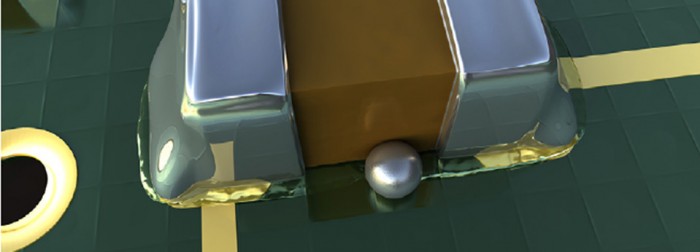I caught up with Alan Rae after a recent IWLPC committee meeting, where he jokingly asked me to, “Stop asking important questions” – LOL! He was kind enough to give me a few moments of his time to share his wit and wisdom, and answer some technology questions that, yes, I thought were kind of important…
[Andy Mackie] You’re increasingly being seen as “Dr Nano” by the electronics industry – how did you arrive as the focus of so much of this technology?
[Alan Rae] At the start of my career I was in the structural ceramics business. In the days of “ceramic fever” in the 1980’s the mantra was sub-micron and monosize (monodisperse) for lower temperature processing and better properties.It worked.Then at TAM Ceramics we made “sub-micron” barium titanate and other ceramic materials but we didn’t call it nano then. When I was at Cookson Electronics in the early 2000’s we started to see nanotechnology emerging from the woodwork with people saying the same about nanomaterials for the electronics industry.Then I joined NanoDynamics in 2004 and realized the scope and potential, ranging from semiconductors to touch screens to printable electronics, to LED lighting, to solar power, to materials such as nano solders, dielectrics, conductors…the list is growing but the leitmotiv is the same – small, monosize, tightly-controlled.
[Andy Mackie] OK, so Nanotechnology has been a buzzword for quite a while – is there a clear definition yet, and what current uses are there for nanotechnologies that may not be immediately obvious?
[Alan Rae] Well, the definition has been really tough to derive – ISO TC 229 “Nanotechnologies” came up with a definition that one dimension of a particle, needle or plate should be less than 100nm but it’s really tough to define…should all particles be less than 100 nm?50%?Any? And should it be exactly 100nm?There are a lot of opinions.The Woodrow Wilson Institute lists over 800 consumer products containing nanomaterials on the market now – industrially the products range from semiconductors, to fillers in packaging materials and underfills, to antimicrobial and self-cleaning coatings for phones.Solar panels, especially thin film ones, depend on nanomaterials in their manufacture.
[Andy Mackie] What is in the pipeline for nanotech electronics and semiconductor interconnect materials? I know that nanosolders are starting to gain ground in some areas – what else is upcoming?
[Alan Rae] Much of the work in nano metals is being done by universities and small companies – for example my small company is working with Purdue and the Air Force to develop a novel solder technology – but commercialization will come by partnering with established companies like Indium Corporation, who have the distribution and technical support so that customers will be comfortable with a new material.Cost and reliability are king.Indium is already in the reactive nano foil business; there are existing and near-term applications for silver, silver-coated copper, alumina coated boron nitrideand their combinations in adhesives, shielding materials and thermal interface materials.
[Andy Mackie] Several years ago, quantum dots were being promulgated for tunable band-gap detectors and quantum computers. How close are quantum dots to seeing real uses, and what else is on the horizon?
[Alan Rae] Quantum dots are unique and have great potential in medical imaging and as frequency shifters for LEDs.The markets haven’t developed yet because of the cost and because some of the best dots are cadmium (toxic metal) based.I’m working with a group at University of Buffalo which has a silicon quantum dot process that looks like a promising alternative.Quantum dots will have their time…but not just yet. In terms of new developments – they range from core shell and modulated structures for thermoelectric to replacing indium tin oxide with carbon nanotubes or graphene.The US National Nanotechnology Initiative tracked $1.6 billion in Government spending (check out www.nano.gov) in the last year at Universities and small businesses and NSF has set up centers of excellence at Cornell and other great universities that are really working hard to translate science into technology so we can make practical products.
=======
Alan, many thanks for your time, and for sharing your insights with us.
Cheers! Andy


